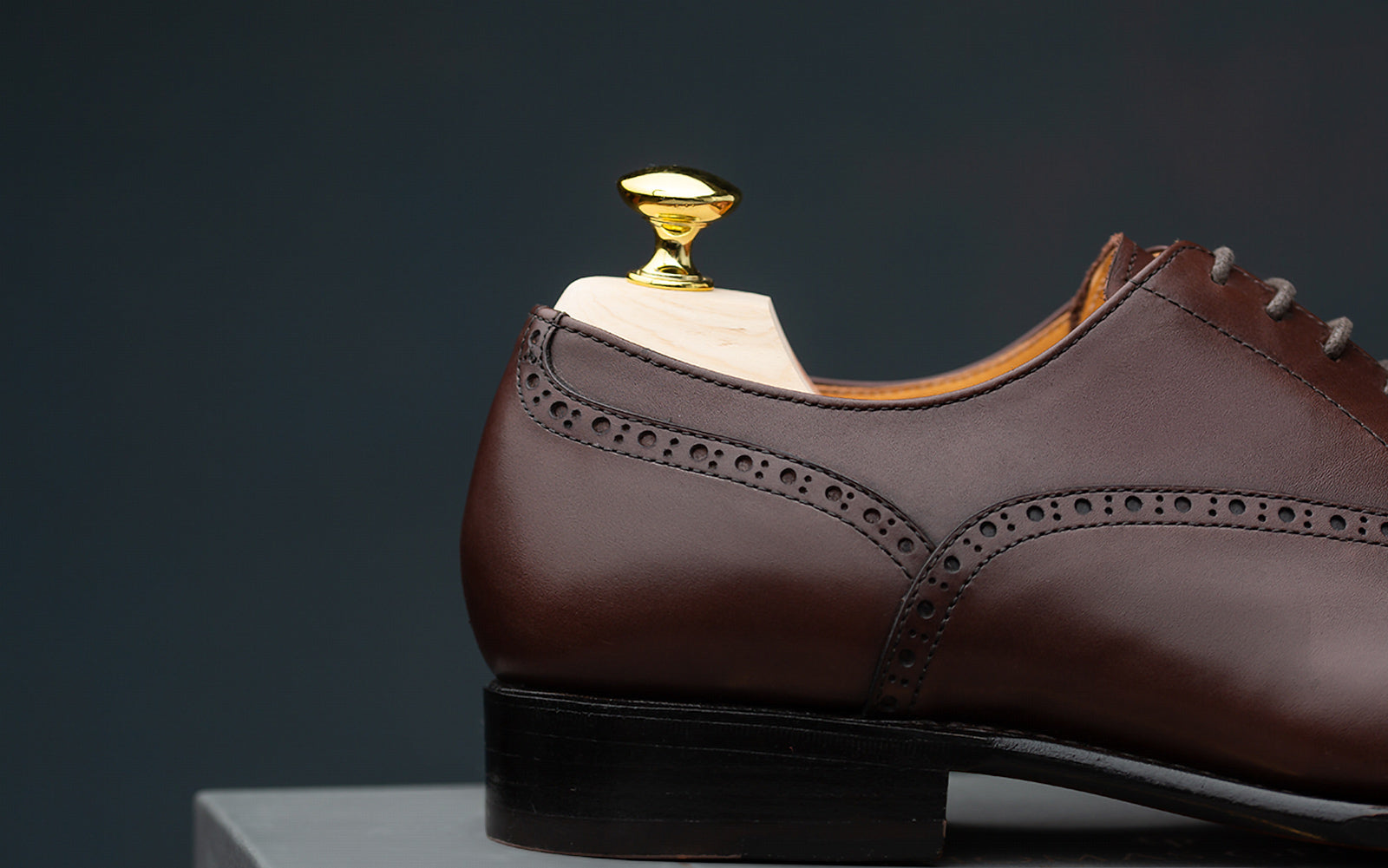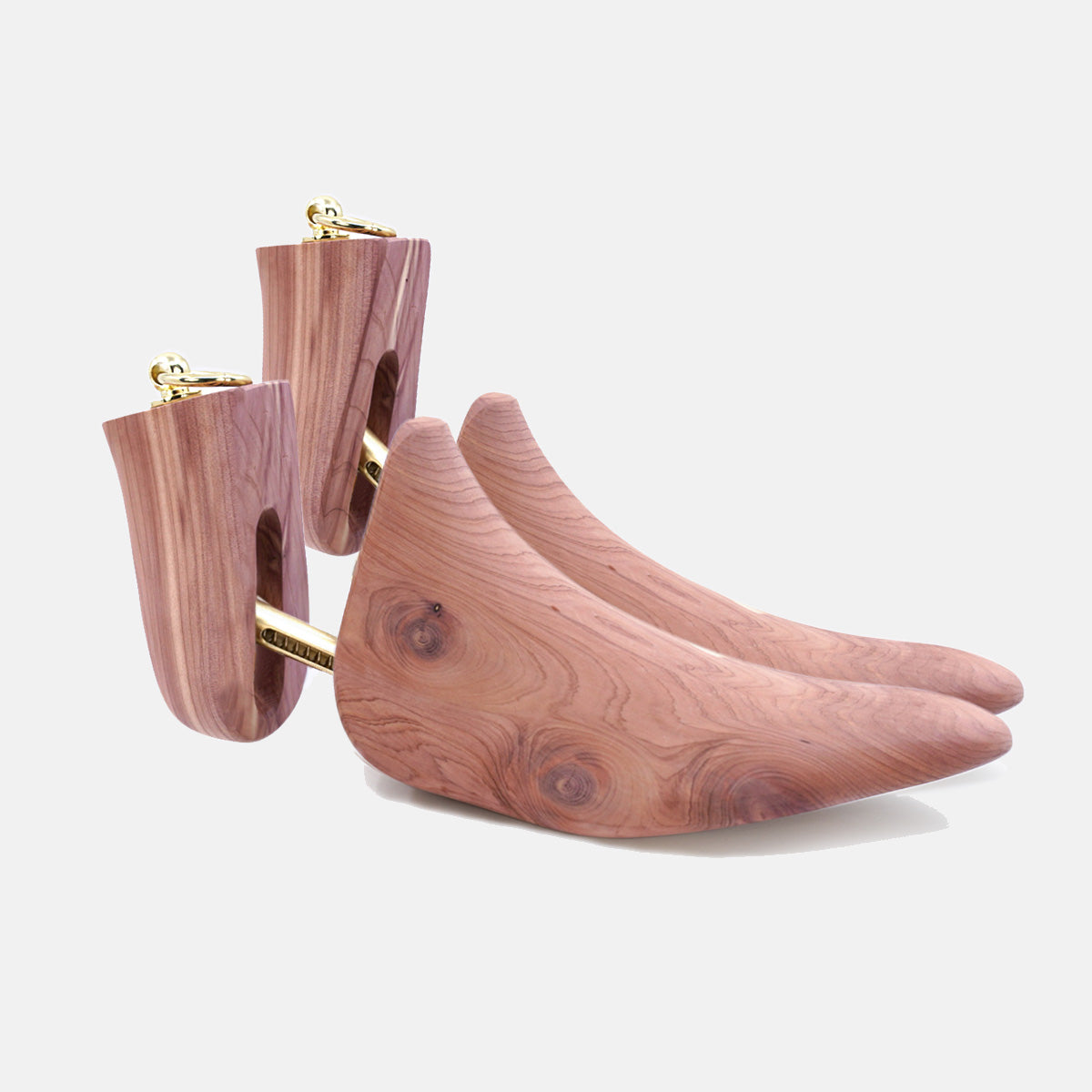Get 10% Off - Auto Applied At Checkout
Get 10% Off - Auto Applied At Checkout
Shoe Trees
shoe stretchers
Sets

Exploring Different Types of Shoe Leather
June 25, 2024 4 min read
Welcome to Trimly's quick reference guide on the various types of shoe leather available today. Choosing the right leather for your shoes is crucial for both style and durability. Let's delve into the key types and their unique characteristics.
Understanding Leather Quality
In the realm of leather, terminology can be misleading. Here’s what you need to know to navigate through:
- Full Grain Leather: This is the pinnacle of leather quality, sourced from the top layer of the hide with all its natural grain intact. It's renowned for durability and develops a beautiful patina over time.
- Top Grain Leather: Smoothed by lightly sanding away imperfections, top grain leather retains its strength while offering a refined appearance.
- Corrected Grain or Genuine Leather: These terms encompass a variety of lower-quality leathers that undergo heavy processing to remove imperfections. They may lack the durability and natural look of higher-grade leathers.
- Tanned Leather: Tanning is the process that converts raw animal hides into durable and pliable leather. This essential step prevents the hides from decomposing, making them suitable for long-term use in footwear and other leather goods.
Types of Leather by Usage
Bison: Bison leather features a pronounced grain pattern and robust durability, making it a favoured choice for casual boots. Its distinctive texture sets it apart from traditional calfskin options.
Calfskin Leather: Known for its smooth texture and durability, calfskin is versatile and perfect for both casual and formal shoes. High-quality calfskin ages gracefully, making it a preferred choice for many.
Exotic Leathers: From ostrich to alligator, exotic leathers are luxurious and highly durable. They are often regulated and come with paperwork to ensure authenticity.
Grain Leather: Often embossed for texture, grain leather includes varieties like Scotchgrain and Country Calf. It's durable, hides creases well, and suits both casual and more sophisticated footwear.
Horsehide: While less prevalent nowadays, horsehide leather is celebrated for its toughness and resilience. It finds applications in specialized footwear, upholstery, and occasional jackets, prized for its rugged appearance.
Kangaroo: Kangaroo leather is highly regarded for its strength and lightweight nature. It boasts a super tight grain structure that contributes to its durability, making it a preferred choice for high-performance athletic footwear. Kangaroo leather is also valued for its sustainability, as kangaroos are plentiful and managed carefully in Australia.
Kudu: Derived from the Greater Kudu antelope, Kudu leather showcases natural imperfections and scars, enhancing its unique appearance. Appreciated for its durability, Kudu leather is often employed in casual shoes and boots.
Nubuck: Similar to suede but with the grain side sanded, nubuck is durable yet more susceptible to staining. It's water-resistant and ages beautifully.
Patent Leather: Known for its glossy, reflective finish achieved through a coating process, patent leather is ideal for formal shoes and attire, offering a sleek and sophisticated look. The leather's construction typically involves a base of quality leather that is coated with a layer of lacquer or plastic, enhancing its shine but with questionable durability (once the artificial layer is cracked it's not easy to fix).
Pull-Up Leather: Pull-Up leather is usually a full-grain leather treated with oils and waxes, giving it a distinctive finish. When the leather is bent or stretched, the colour lightens, creating a unique, worn-in look that adds character over time. Known for its durability and water resistance, Pull-Up leather is popular for more rugged footwear, such as boots and outdoor shoes. Its rich, natural patina enhances with use, and it requires minimal maintenance.
Suede and Roughout Suede: Suede offers a velvety texture and is created by sanding the flesh side of leather. Roughout suede, with less sanding, presents a rougher texture and excellent durability, ideal for boots that develops an attractive patina as it ages.
Shell Cordovan: Derived from horse rumps, shell cordovan is renowned for its non-creasing properties, durability, and natural shine. It's a premium choice for high-quality shoes.
Yearling: Referring to calf leather aged between one to two years, yearling leather is esteemed for its smooth texture and versatility. It strikes a balance between durability and comfort, making it suitable for various types of footwear.
Subscribe
Sign up to get the latest on sales, new releases and more …











